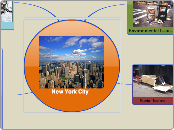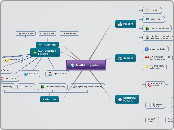Self Determination
Theory is implemented to establish self-control. It also regulates the feeling for people to want to do work (Pearson 2017).
The Morris’ Ideal Organization: Workplace or Facility
Job Conditions
Personality
Having a positive core evaluation is critical for the success of an organization. Having a company that allows their employees to value themselves will directly relate to the value the employees will have for the company.
Having positive job conditions such as reasonable wages, respect for others values, respect of religion, and self, as well as being sociable with employees creates a positive working environment.
Social Learning: direct experience and observation. Four Processes: attentional, retention, motor reproduction, and reinforcement
Emotional Labor
The expression of organizationally desired emotions during interpersonal events [in the workplace].
Employers should not pacify employees when this form of expression is shown but an employer will sympathize for each employee with limitation.
Emotional Intelligence
All persons within the corporation must regulate all emotions with emotional intelligence.
EI being the ability to perceive emotions, understand them, and regulate them properly (Pearson 2017).
Emotion(s)
An employee must know how to control their moods. Having a positive temperament is critical for a well structured organization.
Moral Emotions
Response to occuring events differ in everyone. Valuing both the employer and employees moral obligations is essential. There should also be a sense of compassion for others but also, valuable reasoning at all times.
Having a positive feeling about a job from its characteristics is evident for a successful organization. This theory develops the concept of job involvement and psychological empowerment from identifying the importance of the job.
Employee Engagement
The concept of employee engagement is valued significantly in a well established workplace because the level of engagement an employee shows towards an employer, the greater the levels of satisfaction are.
Employee’s also show compassion to their higher ups and are typically more passionate about their job.
term and long term, indicate a company that is self-driven, determined, and organized.
Commitment
Promotion Focus
Key aspect for setting goals; this concept approaches advancements as well as accomplishments of a corporation.
Reinforcement Theory: consequences
Job Engagement
Situations/ Occurrences: Having a company policy based off of the situational strength theory allows for fairness within the workplace. This concepts also contributes to the lack of discrimination or favoritism that can occur within a workplace.
Incorporating the value system is a positive asset to the situational strength theory. Understanding the intensity, what is valuable, good, desirable, or simply what is right can also correspond to the morality of the company.
Motivation: McClelland’s Theory of Needs
Need for Achievement (nAch): important for the advancement of a company past its own set goals. Drives all individuals involved in the corporation to succeed.
Self Determination
Theory is implemented to establish self-control. It also regulates the feeling for people to want to do work (Pearson 2017).
Sustainability
Innovation: continuation of growth within the company
Location
An in-office company is the best option although telecommuting can be granted on a case by case base.
Telecommuting Granted
Sick
Vacation
Injury
Once every two to three months
Telecommuting decreases employment involvement as employees are not as engaged.
Workplace Characteristic (cont)
Decision Making
Groupthink and Groupshift: management of decisions throughout the company
Accuracy
Speed
Creativity
Acceptance
knowledge, increase diversity and acceptance throughout the company
Diversitty
Set norms for the group for a common set of behaviors
Norms and Emotion: help cooperate with social responsibility for managers and employees
Role Expectations: characteristics of how someone should act, believe to act
go over the map
put your mind to work
recall as many details as you can about the keywords you added
Pay and Location
Equal pay must be granted regardless of appearance internally or externally.
Profit Sharing Pay
Bonuses
Flexible benefits: insurance
Pay and location are the least likely important aspects within a corporation because each individual has the qualifications to represent the company. There are no discrepancies
An in-office company is the best option although telecommuting can be granted on a case by case base.
Telecommuting Granted
Sick
Vacation
Injury
Once every two to three months
Telecommuting decreases employment involvement as employees are not as engaged.
Maslow Hierarchy of Needs
Promotion Focus: strive for advancement and accomplishment towards the desired goal
Intensity: concerned with how hard a person tries.
Direction: the orientation that benefits the organization.
Persistence: a measure of how long a person can maintain his/her effort.
Self Actualization
Esteem
Social Belongingness
Safety-Security
Physiological
Herzberg's Theory: reliable for self reports, methodology, and satisfaction.
Workplace Characteristics
Attitudes
A positive attitude relevant to the success of a workplace. An attitude is a reflection about how people feel.
Festinger’s point of view indicating the use of cognitive dissonance is a key component to the success of an organization. Cognitive dissonance is the incompatibility individuals perceive between attitudes and or behaviors.
Variables
The importance of an attitude
Corresponding behavior
Social pressures
Relationship
Perceived Organizational Values (POS) is a more suitable job attitude for an employer to example (Pearsons 2017).
POS:
Shows the value the workplace has for its employees
Cares about the wellbeing of the organization in response to each employee
Grants fair rewards for employees when decision making is needed
Provides a support system from each employer (ex: supervisor, manager. HR)
The workplace should not be a discriminative environment whether that be race, age, sex, religion, ethnicity, sexual harassment, or exclusion.
A workplace should not discriminate against an individual’s ability to do work physically or intellectually.
Discrimination
Ethics
dEthic is defined as the discipline dealing with what is considered to be good or bad in a oral obligation (Merriam-Webster Dictionary 2018).
A set of moral principles
The principles of govern within a group or an individual
Ethics: a set of moral issues/ aspects such as rightness
elete info
A workplace valuing ethical dilemmas and ethical choices are critical for a pleasant workplace. Good ethical behavior is considered to be misrepresented and not easily defined but managers need to be able to develop this concept to be able dictate a healthy workplace climate.
An organization must know how to work within an ethical dilemma without disrupting the workplace if need be.
Economic Pressure/ Globalization
Increase in diversity: working with people of different cultures and increasing foreign assignments.
The ability to develop the company/ organization within other countries (overseas).
The ability to adapt outside of cultural norms.
→ The ability to utilize low cost labor in product.
A manager who has developed an environment that can remain stable through economic mishaps and economical advancements.
A workplace that will lack stress and will know how to cope with negative impacts at times.
Workforce Diversity
The ability to be a diverse company is essential for comfobility in employees and essential for the work environment.
This concept improves customer service by being able to interact with any group of people.
Employee attitude satisfaction also improves when diversity is established.
Customer-Responsive Culture Develops
With being a double minority myself, being apart of a diverse and inclusive workplace is essential to my own success. The comfobility within the work environment is essential to the success of a company. Being able to relate to all people is critical for a company's success.
Myers-Briggs Personality Indicator
Status and Group Interaction is responsible for the assertiveness of high status people
Persistency
Efficiency
Analytical Skills
High Standards: for the company
Communication Skills
Teamwork
Enthusiasm
Listening Skills
Persistency
Communication Skills
Have an eye for attention to detail
Teamwork Skills
Efficiency
Flexibility
Analytical Skills
High levels of enthusiasm
High Standards: for themselves
Listening skills
Each manager would take the Myers-Briggs assessment to understand who they are and how the feel for others. This system will help management indicate how to properly handle situations, value employees, and value themselves.
Extroverted
Sensing
Intuitive
Thinking
Feeling (minor)
Perceiving
Organizational Spirituality: acknowledgment of each individuals spiritual belief
benevolence. purposeful, trust, respect, and open-mindedness from management and workers.
Organizational Climate: organizational response within the workplace along with the habits of the workers.
Ethical Climate Index: associated with the dimensions of ethical climate. To create the conduct of the workplace, the index must be asserted. Caring, laws, codes, independence, and rules.
Ethical Work Climate: important for the advancement of the workplace by justifying right or wrong organizational values
Functional Conflict: supports the goal of the group although there can be negative effects
Mediator, arbitrator, and conciliator
Traits Theory of Leadership:important for the quality of the workplace
Trust: dependent of leadership is to have trust and to be trusted by peers as well as those individuals within the company.
Transformational Leadership: creativity, responsibility, taking the proper risks, compensation (long term), and again setting goals are important for the quality of leadership.
Authentic Leaders
Charismatic Leadership: ethical relationship to teamwork and conduct for team members
Fiedler Contingency Model: match of leadership styles to workers is critical within the workplace. This relationship depends on style of leadership is effective for the group.
Task/ relationship oriented
Need for good leaders
Organizational Policies
Maintaining Stress: by allowing individuals to voice their own opinion but remain within the rules of the company, stress is limited.
Teams
Adequate resources derive from team building activities. Leadership and structure can occur throughout teams.
Characteristics that derive from teamwork: the ability of the members, each persons personality, roles, diversity, culture, the size of the team and the preferences of each member. All can positively effect the growth of the company.
Processes of a Team: goals, efficiency, identity, mental models, conflict, and the social loafing concept.
Personality
Motivation
Having a company policy based off of the situational strength theory allows for fairness within the workplace. This concepts also contributes to the lack of discrimination or favoritism that can occur within a workplace.
Incorporating the value system is a positive asset to the situational strength theory. Understanding the intensity, what is valuable, good, desirable, or simply what is right can also correspond to the morality of the company.
Emotions
Emotional Intelligence
All persons within the corporation must regulate all emotions with emotional intelligence.
EI being the ability to perceive emotions, understand them, and regulate them properly (Pearson 2017).
Emotional Labor
The expression of organizationally desired emotions during interpersonal events [in the workplace].
Employers should not pacify employees when this form of expression is shown but an employer will sympathize for each employee with limitation.
Moral Emotions
Response to occuring events differ in everyone. Valuing both the employer and employees moral obligations is essential. There should also be a sense of compassion for others but also, valuable reasoning at all times.
An employee must know how to control their moods. Having a positive temperament is critical for a well structured organization.
Positive Core Evaluation
Having positive job conditions such as reasonable wages, respect for others values, respect of religion, and self, as well as being sociable with employees creates a positive working environment.
Fred Luthan developed a theory stating that organizations have their own take on what the best form of management may be (Pearson 2017).
Networking: being sociable, political, and being able to interact with others
Human Resource: motivating, disciplinary, conflict resolving, being able to staff employees, and having the ability to train
Communication: verbally exchanging information as well as transcribing information
Traditional: a manager who can decision make, plan, and control
Management Skills
Monitor Role
Technical skills is essential for management because those attributions form expertise. Interpersonal skills are credible assets to have within a manger. These skills allow for a managerial candidate to be hired with experience.
Human skills are the most important aspect to have because those are skills essential for communication. These skills also demonstrate the way a manager can work with a group. Another essential characteristic for managers to have.
Conceptual skills is the second most important aspect of being a manager. The mental capacity to analyze and properly react to any situation. Ex: problem solving, identifying issues first hand, and finding alternative ideas for any or all situations.
A monitor form of management receives a variety of information to designate to the employees and the contacts outside of the company
Having a monitor role creates an equal based environment in the workplace. Although there is a system of power, monitoring employees instead of being a figurehead or a dictator allows for employees to advance within a company by developing a greater work ethic.
A monitor form of management is the most suitable form of management for any business. The monitor is considered to be the nerve center of the internal and external information of the organization.
A monitor form of management receives a variety of information to designate to the employees and the contacts outside of the company
A monitor is able to move the company towards the main goal by helping employees develop into successful individuals.
The ability to control task is also significant for this role. The monitor is in control of the database for the company including being notified when employees are sick, vacationing, or moving forward within the company.
Organizational Development: necessary to create the effectiveness of the company in entirety.
Power Tactics
Political Skills: important to operate the company fluidly.
Job Characteristic Model; motivating potential score
helps induce a higher job performance
Self Determination
Prevention Focus
easier to remember
Self Efficacy Theory
enactive mastery/ vicarious modeling are adequate ways of communication for managers
Promotion Focus
Pygmalion Effect: a way of positive persuasion
Self Fulfilling Prophecy: believing in the truth
Reinforcement Theory
Operant Conditioning
McClelland's Theory of Needs
Need for Affiliation: desire for close relationships; manager to friend relationship
Need for Power
Need for Achievement: manager can set standards









